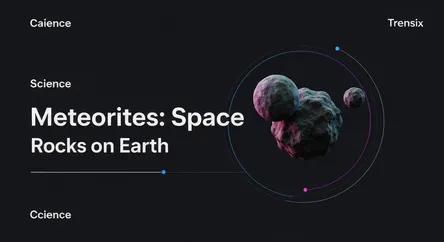Science
Meteorites: Space Rocks on Earth

Discover what meteorites are, where these ancient space rocks come from, and the valuable clues they hold about our solar system's history.
What is it?
A meteorite is a solid piece of debris from an object, such as a comet or asteroid, that originates in outer space and survives its passage through the atmosphere to land on Earth's surface. As these objects, known as meteoroids, blaze through the air, they create a streak of light called a meteor or shooting star. Most burn up completely, but those that make it to the ground are called meteorites. These rocks from space are incredibly old, with some dating back to the formation of our solar system, providing invaluable scientific data.
Why is it trending?
Meteorites often trend due to spectacular meteor showers that capture public imagination and media attention. Recent space missions aimed at collecting asteroid samples, like NASA's OSIRIS-REx, have also heightened interest, as they essentially bring back pristine meteoritic material. Furthermore, the market for collecting and selling meteorites has grown, with stories of rare finds and high-value sales occasionally going viral. These events keep the topic of extraterrestrial visitors fresh in the public consciousness.
How does it affect people?
While a major impact event is a catastrophic but rare possibility, meteorites primarily affect us by fueling scientific discovery. They are tangible pieces of other worlds, offering clues about the origins of planets, water, and even life, without the immense cost of a deep-space mission. For the public, meteorites inspire awe and a connection to the cosmos. Finding a meteorite can be a once-in-a-lifetime discovery, linking an individual directly to the vast and mysterious universe beyond our planet.